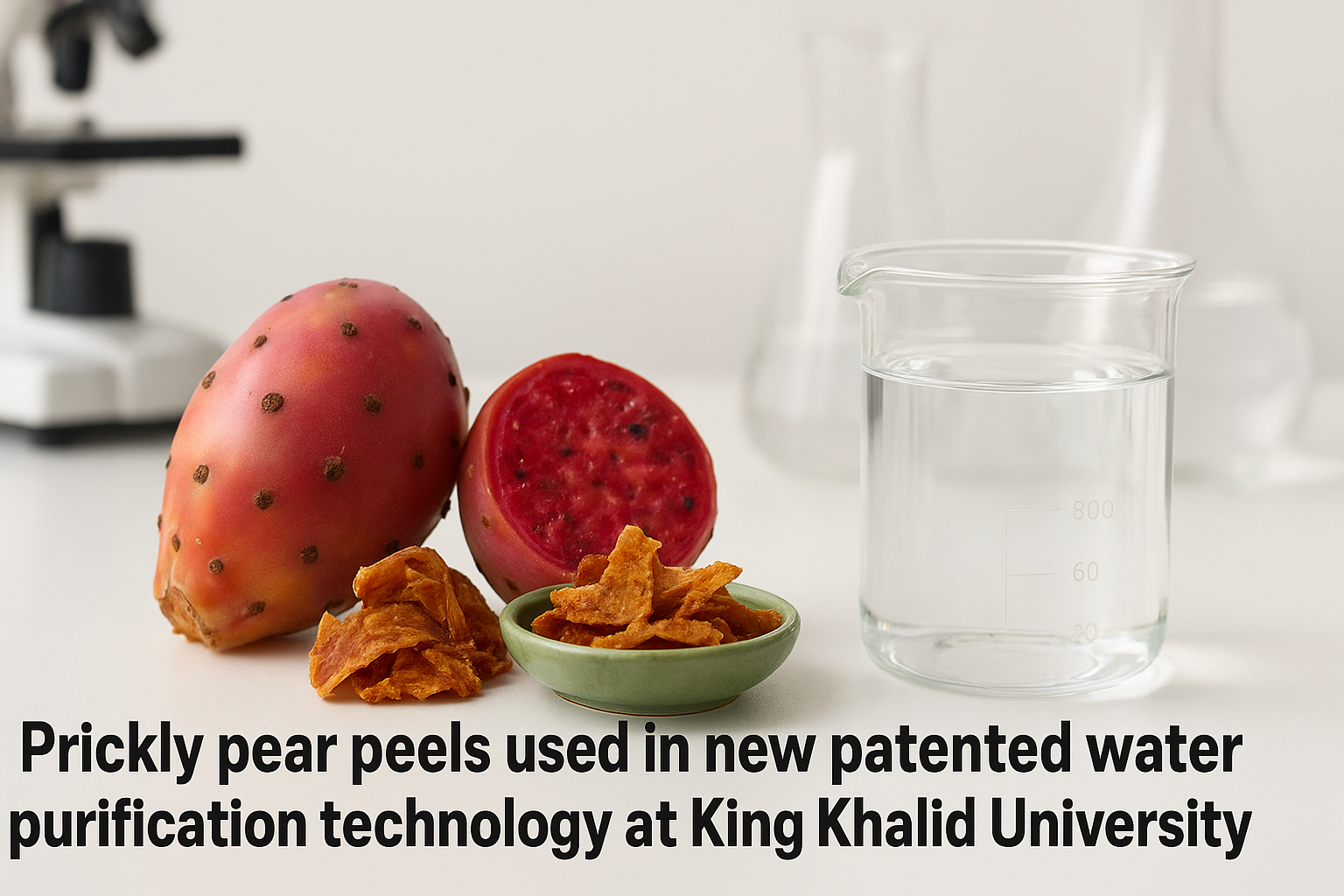A team of researchers at King Khalid University has secured a patent for a breakthrough water purification technology that uses prickly pear fruit peels. The innovation promises an eco-friendly and low-cost method to clean contaminated water, with potential applications across industries.
Turning Fruit Waste into Clean Water
The scientists developed the technique by converting prickly pear peels into a fine powder. This powder acts as a natural adsorbent to trap harmful cationic dyes commonly found in textile and industrial wastewater. These dyes are notoriously difficult to remove because they strongly bind to water molecules.
To enhance performance, the peels are treated with ultrasonic waves and alcohol-based solutions. This process increases porosity, enabling the material to absorb more pollutants. According to the research team, the treated peel powder removes over 98% of contaminants.
Read more about sustainable patent innovations.
High Efficiency and Reusability
One of the most promising features of this invention is its ability to be reused several times without significant loss of efficiency. Conventional materials like activated carbon often require high production costs and energy inputs. By contrast, fruit peel waste is cheap, abundant, and biodegradable.
This approach not only reduces agricultural waste but also lowers the cost of treating wastewater.
Patent Recognition
The Saudi Authority for Intellectual Property (SAIP) granted the patent, giving global recognition to the researchers’ eco-friendly method. The development aligns with Saudi Arabia’s commitment to promote green technology under Vision 2030.
Explore more on patent-driven clean technologies.
Potential Applications
The technology can be a game-changer in:
- Textile wastewater treatment
- Industrial dye removal
- Rural water purification
- Low-cost filtration in developing regions
Researchers believe the model could inspire further work on using other agricultural byproducts to clean water.
Global Relevance
Water pollution remains a critical issue worldwide. With industries discharging millions of liters of dye-contaminated water every year, the demand for sustainable purification methods is rising. This innovation highlights how waste materials can be transformed into valuable resources.

